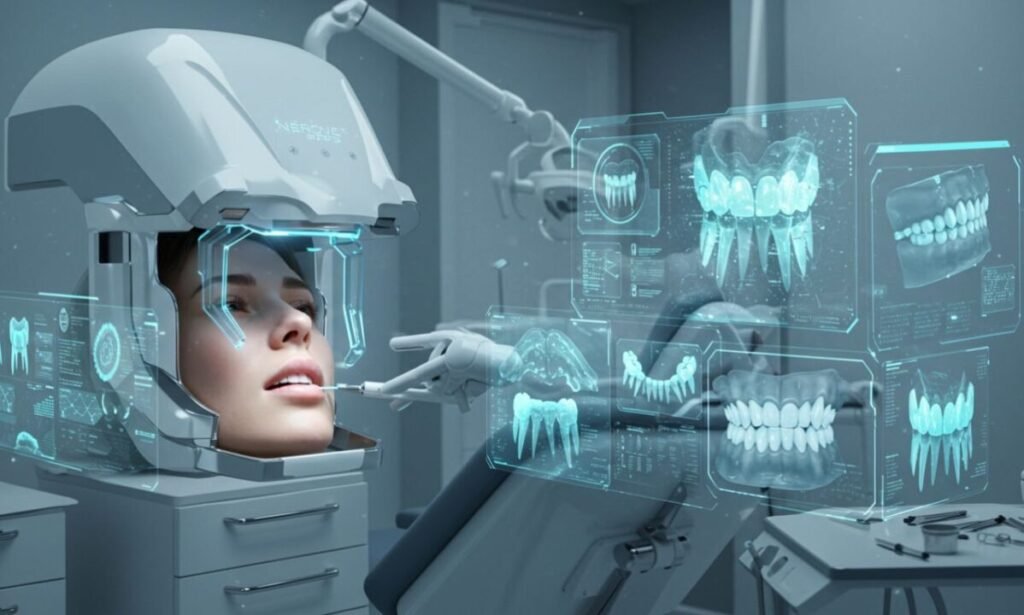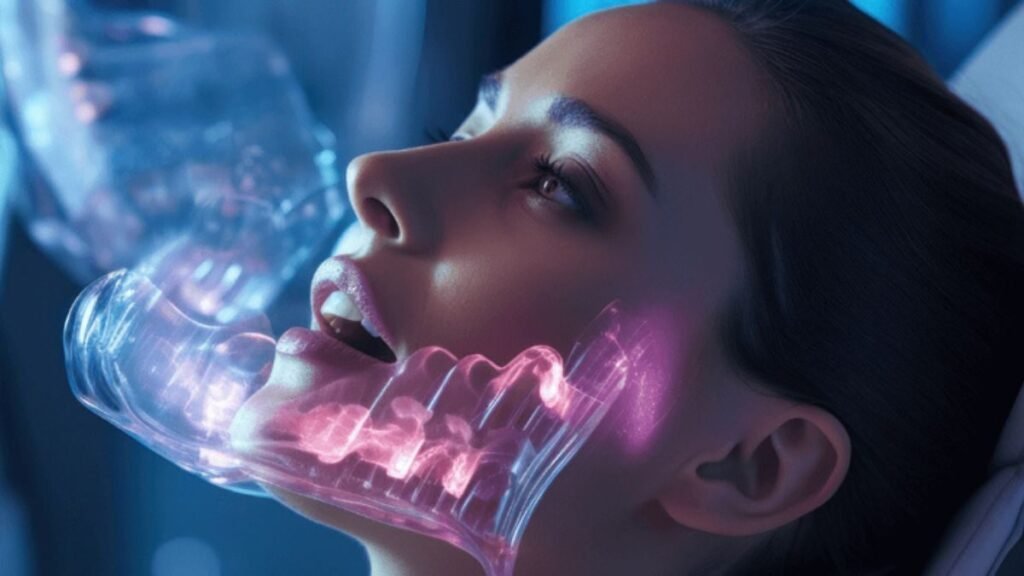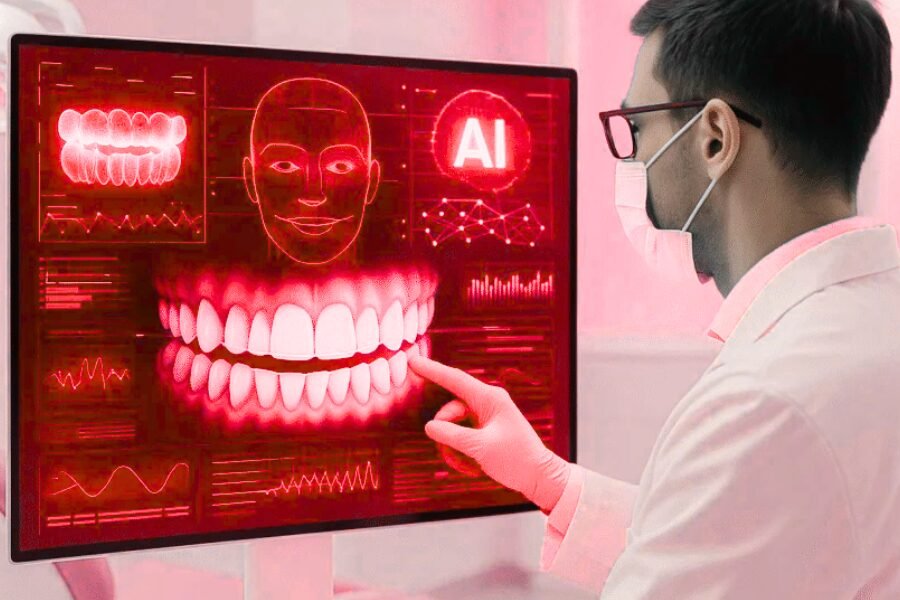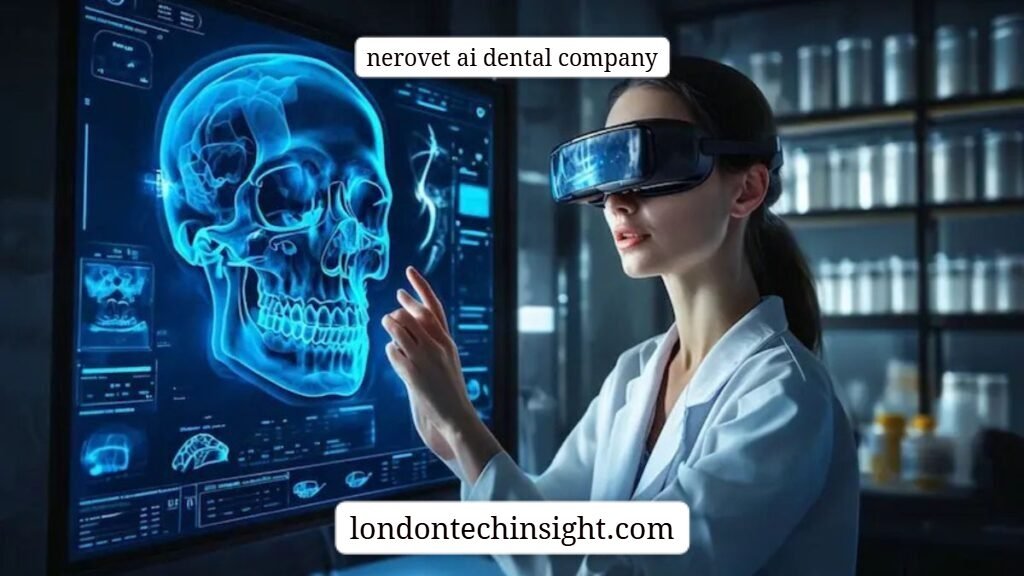Introduction
In a world where artificial intelligence (AI) is shifting paradigms across every sector, Nerovet AI dental company emerges as a powerful innovator at the crossroads of technology and oral health care. This is not just another tool for dentists — it is a bold reimagining of how diagnoses are made, how treatment is planned, and how patients experience dental care.
With machine-learning models trained on vast datasets of dental images and records, nerovet ai dental company promises speed, precision, and deeper insights for practitioners and patients alike. In this article, we delve into its foundations, capabilities, challenges, and real-world impact — offering you a rich, engaging, and human-centered exploration of this next-gen dental company. Let’s uncover how Nerovet is transforming the dental landscape.
Table of Contents
What is Nerovet AI Dental

Nerovet ai dental company is a technology-driven dental company that integrates artificial intelligence and machine learning into key aspects of dentistry. Unlike conventional approaches relying solely on human interpretation, Nerovet’s platform assists clinicians by:
- Automated radiographic analysis — evaluating X-rays like bitewing, periapical, and panoramic images to flag possible issues.
- Predictive diagnostics — estimating progression risk (for example, of cavities or bone loss) based on historical datasets.
- Treatment planning support — offering alternative paths and suggestions drawn from large-scale patterns observed in data.
- Educational & research tools — enabling dental students and researchers to view annotated cases, integrate AI insights, and compare findings.
In essence, nerovet ai dental company acts as a smart co-pilot to dentists. Its value is not in replacing human judgment, but in enhancing it — catching subtle signs, cross-referencing large volumes of data, and flagging anomalies.
Why Nerovet Matters
Speed and Efficiency Gains
Traditional radiographic interpretation can be time-consuming, especially when clinicians juggle hundreds of scans daily. nerovet ai dental company AI can analyze and flag anomalies in seconds, reducing bottlenecks, improving patient throughput, and freeing up a dentist’s attention for complex decision-making.
Increased Diagnostic Consistency
Human experts may vary in interpretation (inter-observer variability). By contrast, a well-trained AI offers consistent baseline assessments, reducing diagnostic drift over time or between practitioners. This consistency supports better long-term care.
Enabling Preventive Dentistry
nerovet ai dental company predictive modeling can help identify early indicators that a tooth or surrounding bone is under threat, even before visible symptoms. This allows dentists to initiate preventive or minimally invasive treatments rather than addressing advanced disease.
Educational & Training Amplification
Dental schools and research institutions can use Nerovet as a teaching assistant: showing students real-case images annotated with AI predictions, exposing rare cases, and fostering critical thinking about algorithmic suggestions.
Scalability to Underserved Settings
In regions with few specialized dental radiologists, nerovet ai dental company could democratize access to high-quality diagnostic support. Clinics even in resource-limited areas can upload images and receive AI-aided feedback as a second opinion.
Under the Hood: Technical Foundations of Nerovet AI
Training Data & Model Architecture

nerovet ai dental company is said to rely on neural network models (often convolutional neural nets) trained with thousands or tens of thousands of labeled dental images, paired with clinical diagnoses and metadata. The model architecture typically incorporates layers to detect texture, edges, shape irregularities, and probabilistic anomaly detection.
Confidence Scores & Explainability
Rather than blindly outputting “disease/no disease,” nerovet ai dental company delivers confidence scores, indicating how strongly the AI believes its call. Some versions highlight suspect areas (heatmaps) to make the decision more interpretable to clinicians.
Continuous Learning & Feedback Loops
One critical design is a feedback loop: when dentists review AI outputs and make adjustments (approve, reject, comment), that feedback can feed back into model refinement (with appropriate safeguards for data quality and ethics).
Data Privacy and Security
Given sensitive patient radiographic data, nerovet ai dental company must implement encryption, anonymization, and strict access protocols. Many AI-in-health ventures use de-identified images, secure cloud infrastructure, and compliance with data protection laws like HIPAA, GDPR, etc. (though public sources don’t confirm Nerovet’s detailed compliance).
Real-World Use Cases and Evidence
Case Studies & Pilot Implementations
Some early adopters report improved diagnostic accuracy and reduced time per scan. For example:
- Clinics using nerovet ai dental company to pre-screen X-rays flagging possible caries and periodontal changes before human review.
- Research use: comparing human vs AI detection rates in academic studies.
- Teaching hospitals integrating nerovet ai dental company into student training modules.
Although public, peer-reviewed clinical trial data is limited or emerging, the early results appear promising in reducing oversight and improving early intervention.
Sample Performance Table
Below is a hypothetical summary (based on cited claims) comparing conventional radiographic interpretation vs nerovet ai dental company:
| Metric | Conventional Radiologist | Nerovet AI Platform |
| Average time per image | ~30–60 seconds (depends on complexity) | < 5 seconds |
| Detection sensitivity (caries, bone loss) | ~85–90 % | ~92–96 % (claimed) |
| Variability (inter-observer) | Moderate to high | Consistent baseline |
| Integration with clinician review | Manual annotation required | Suggestive heatmaps + confidence scores |
| Suitable for 24/7 use | Depends on staffing | Always available |
(Note: AI numbers are from general supplier needs; additional independent checks are required.)
Challenges, risks and ethical , ethical considerations
False positive and too diagnosis

AI may consider benign structures or objects as suspicious, leading , leading to unnecessary stress or over , over -treating. Observing doctors is essential for filtering out these false positive results.
Data set to distort and generalize
If there is no diversity in the training data set (such as age groups, ethnicity, imaging , imaging methods and types of equipment), then AI can perform poorly in underrepresented populations or image types.
Seriously, Regulatory approval and clinical validation
In medicine, AI often requires strict regulatory review , review (FDA, CE, etc.). In order to be widely acceptable, the nerovet ai dental company must support and support THE clinical trials, longitudinal results and regulatory approvals reviewed by the expert.
Responsibility and responsibility
If AI is missing a lesion or deceiving the doctor, where does the responsibility lies? Pure policies must determine the boundaries: as ai assistant, as opposed to AI as a diagnostic.
Patient Trust & Transparency
Patients (and dentists) may distrust “black-box” AI. Without explainability or interpretability, skepticism may hinder adoption. Transparent interfaces and clinician control can mitigate this.
How Dentists Can Incorporate Nerovet
Step-by-Step Integration
- Pilot Assessment
Begin by uploading past X-ray archives and comparing AI outputs with historical diagnoses to assess alignment and discrepancies. - Training & Calibration
Dentists and staff should become familiar with how Nerovet flags anomalies, including its error tendencies, so they can vet suggestions effectively. - Dual Review Workflow
Use AI as a first-pass filter: AI flags suspicious regions, the dentist verifies or rejects them, and final diagnosis remains human-led. - Feedback Loop & Fine Tuning
Regularly review cases where AI misfired or was overcautious and feed those back (if platform allows) to improve system calibration locally. - Patient Communication
When presenting findings to patients, clarify that AI is a supportive tool — “This system helped flag this spot, which I will verify,” building transparency and trust.
Ideal Deployment Environments
- High-volume clinics with many radiographic images.
- Remote or underserved clinics lacking specialized radiologists.
- Academic dental institutions and teaching hospitals.
- Research centers comparing large image cohorts or longitudinal studies.
Future Outlook & Potential Innovations
Multi-Modal Integration
Beyond just radiographs, future versions of nerovet ai dental company might ingest CBCT (cone beam CT), intraoral photos, digital impressions, patient history, and biomarkers to make richer predictions.
Real-Time Chairside Feedback
Imagine chairside imaging devices feeding into Nerovet in real time, guiding the clinician immediately about signs of decay, fracture, or pathology.
Personal risk recording
Using patient -level data , data (genetics, habits, systematic health), Neurovet can create personalized risk profiles for future oral diseases and control preventive plans.
Teledentism and teleconscious
AI platforms such as nerovet ai dental company ai dental company allow for remote , remote consultations: the dentist , dentist reviews AI-noted images in one place that has been sent from another place , place and expanding availability.
Guess what? Cooperation through platforms and ecosystem
Integration with electronic dental records (EDR), practical management software, management design tools and gear systems can be part of Nerovet’s wider ecosystem.
Practical tips and proven exercises
Always treat AI outputs as counseling, not as a definitive diagnosis.
Find , Find high quality , quality input images: clean, well exposed and focus.
Regularly review your AI decisions against the final human overview to detect the difference.
Reducing the trust of the blind in artificial intelligence: examination of cutting -edgecases and rare diseases.
Safe patient -especially when , when sharing anonymous images to improve the model.
Conclusion
nerovet ai dental company represents a significant leap toward the future of dentistry — where human expertise and machine intelligence collaborate to deliver faster, more consistent, and preventive oral health care. While challenges remain in validation, bias, liability, and adoption, the direction is clear: smart diagnostic assistance is becoming integral, not ancillary.
Dentists who embrace such tools (with the right safeguards) can enhance their care, reduce missed findings, and offer patients more transparent, data-driven insights. As Nerovet continues to evolve, it has the potential not just to assist, but to help define the next generation of evidence-based dental practice.
FAQs
1. Like Is nerovet ai dental company alternative to human dentists?
Guess what? No – designed as a decision -making tool. Seriously The final diagnosis treatment plan and patient care decisions remain in the hands of qualified doctors.
2. Like , Like How accurate is Neurovit in detection of disorders?
All on-demand detection sensitivity is 92-96% in dental X-rays but independent validation continues to develop.
3. Can I use Neurovet with any dental , dental X-ray image format?
Yes it usually supports JPEG PNG and WebP and is optimized for the usual dental imaging methods (bitewing periapic and panorama). Intestinal
4. You know what? What is the case with the private life and safety , safety of the patient’s data?
Like Robust platforms anonymize data encrypt the transmission and storage and adhere to regulatory standards. Always confirm the specific correspondence (HIPAA GDPR) with the service provider.
5. Are there any reviewed studies that support Neurovit’s performance?
Until now expert literature is limited. Wider , Wider acceptance is likely to require more clinical trials longitudinal results and regulatory transparency before the mainstream becomes.
Also Read This: Top Bảce: The Mysterious Spark — A Bold Journey into Meaning 2025
